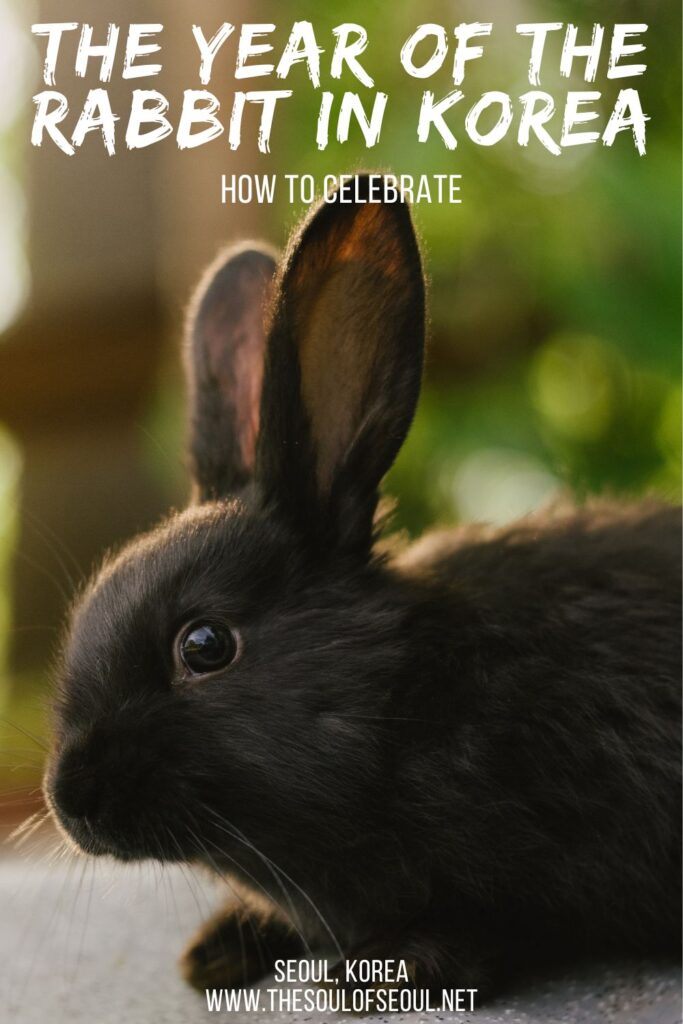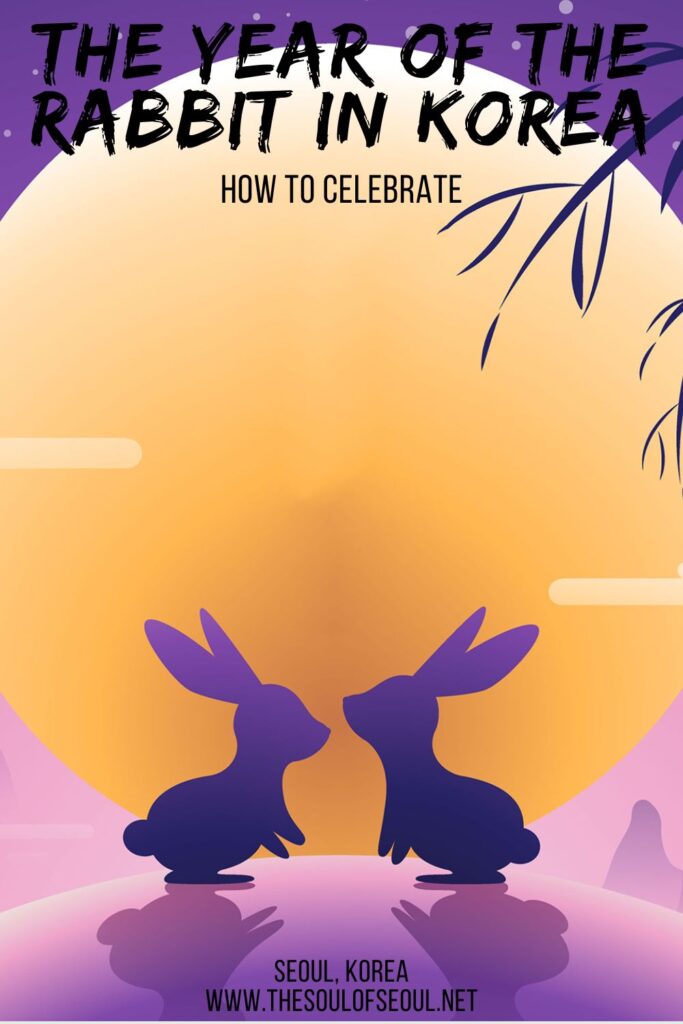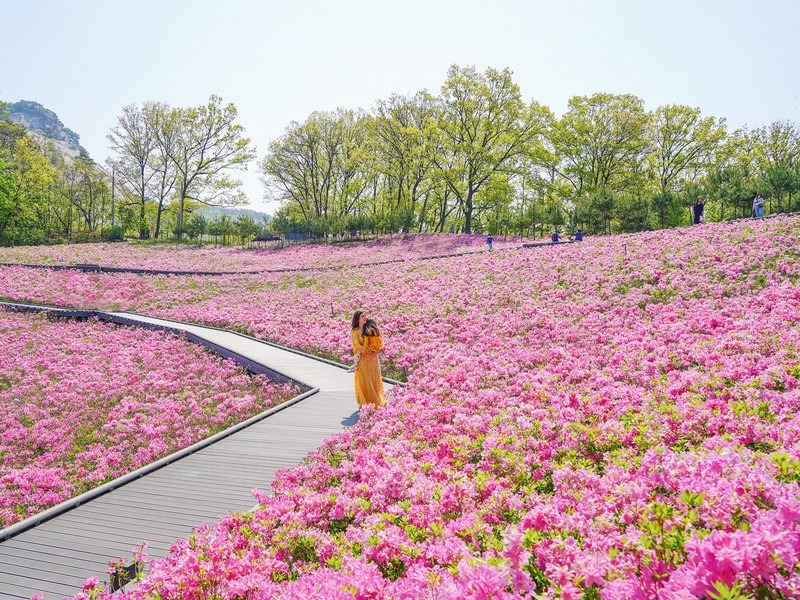How To Celebrate the Year Of The Rabbit In Korea
Happy New Year! 2023 is the Year of the Rabbit, a black rabbit to be precise, and rabbit’s are a sign of longevity, peace, and prosperity so this is looking like it will be a year of hope and fruitfulness. In Korean, this year is called “Gyemyonyeon”, 계묘년, with “Gye” meaning black, “myo” meaning rabbit, and “nyeon” meaning year. The year of the Black Rabbit is associated with the heavens.
So, what does the Year of the Rabbit mean? And, how can you celebrate the Year of the Rabbit in Korea? Here’s what you need to know…

What to know about the Year Of The Rabbit in Korea:
(This post contains affiliate links, which means I receive a certain percentage of a sale if you purchase after clicking at no cost to you. Thank you for your support.)
The Rabbit in Korean Folk Tales
The rabbit is a common sight in Korean folk tales of yore but there is one white rabbit that is more popularly shared than others. In this story, the Moon Rabbit, also called the “Jade Rabbit” is said to live on the moon and he pounds rice in a mortar to make tteok, or rice cakes. While many in the west talk about the “man in the moon” in most of Asia, it is a rabbit that resides there.
To understand how a rabbit ended up on the moon, you can follow the story below. Briefly though:
The story is about three animals, a rabbit, a fox, and a monkey who have devoted themselves to Buddhism. They are kind and helpful and one day The Emperor of the Heavens asks the animals to help him by bringing him some food. The fox catches a fish and brings it to the emperor. The monkey collects fruits from the tall trees and brings them to the emperor. The rabbit, thinking the emperor wouldn’t want to eat grasses and clovers as he does offers himself as fare. The emperor, being touched by this act of devotion and commitment appoints the rabbit as guardian of the moon.
There is even a famous children’s song called “Half Moon” that was written by Yoon Geuk Young in 1924 that shares the tales of the rabbit with the lyrics:
High above the deep blue sky, down the Milky Way,
Rides a ship without a sail, with no oars they say,
Ship of white, its only crew, is a rabbit white,
Westward it floats along, silently through the night
Rabbits also consistently show up in pansori stories, or traditional Korean musicals. The most famous pansori rabbit comes out in “Sugungga” (수궁가), one of the five surviving traditional pansoris from the Joseon Dynasty that reigned from 1392 until 1910. In this story, the rabbit is a clever character that outwits a corrupt ruler.
In the beginning, he is lured into the palace of the Dragon King of the Southern Sea by a turtle. The king needs a rabbit’s liver to save his life so of course, the rabbit comes quite close to death in the tale but escapes by lying and saying it must return to it’s home to get its own liver which it took out to dry in the sun. The king, trusting the rabbit, releases him to return home and loses out on killing the rabbit to save himself.
What Will The Year Of The Rabbit Bring
The rabbits are known as cute and gentle animals today, but they are also known as fertility symbols as they birth many offspring. Because of this, they are known as symbols of prosperity and abundance. They are also known for being sensitive and good natured so there is a lot of optimism surrounding this year.
How To Celebrate
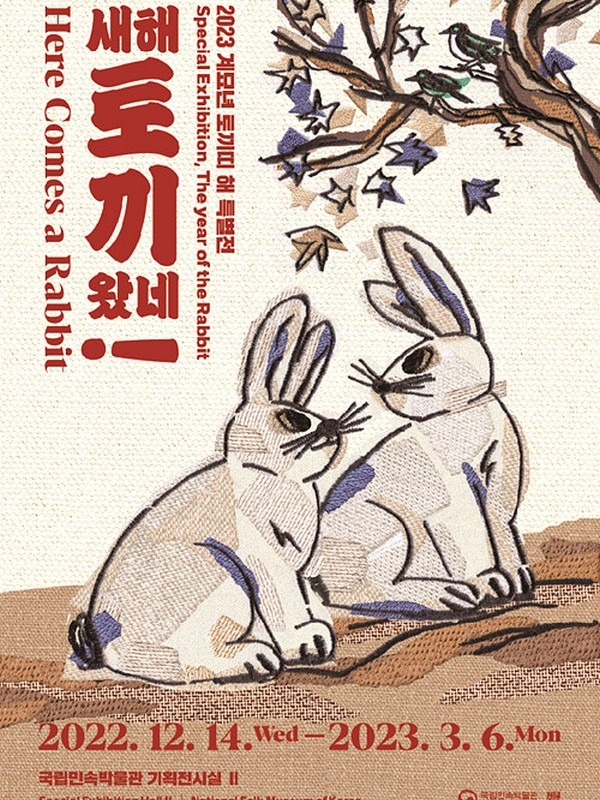
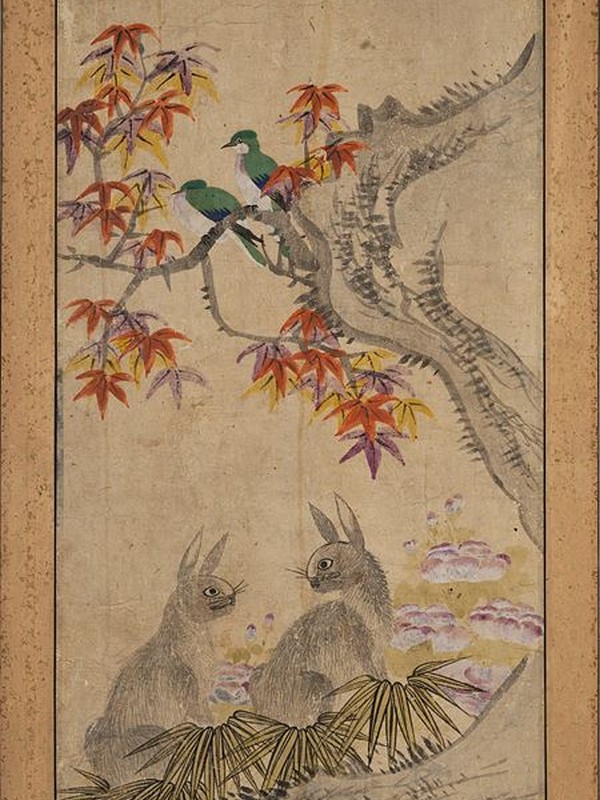
Visit The National Folk Museum Of Korea
Each year, the National Folk Museum of Korea is host to an exhibition at the beginning of the year devoted to the animal that will reign in the zodiac for the year. This year, their exhibition titled “Here Comes A Rabbit” will run until March 6, 2023 and showcases 70 rabbit-related works and records about the animal’s characteristics both physical and behavioral, as well as its symbolic meaning to Koreans.
- Address: 37 Samcheong-ro, Jongno-gu, Seoul (서울시 종로구 삼청로 37)
- Hours: November – February: 9:00am ~ 5:00pm; March – May: 9:00am ~ 6:00pm; June – August: 9:00am ~ 6:00pm on weekdays/7:00pm on weekends; September – October: 9:00am ~ 6:00pm
- Admission: FREE
See What Awaits You In 2023 With A Saju Reading
Fortune telling is a pretty popular pastime for many in Korea. A form of entertainment, but also a guide for many life choices, having a Saju reading is an especially popular experience between December and February as people look to the new year. Saju is a practice that analyzes the cosmic energy at the hour, day, and year of a person’s death. You’ll want to go with someone who can help translate if you don’t speak Korean and want to understand fully, though there is a saju cafe in Hongdae that offers English translation services.
Jaeminan Jogakga (재미난조각가 타로&사주출장소)
- Address: 26 Wausan-ro 21-gil, Mapo-gu, Seoul (서울 마포구 와우산로21길 26 1층)
- Hours: Every day: 12:00pm ~ 2:00am
- Website: http://www.funnysaju.com/
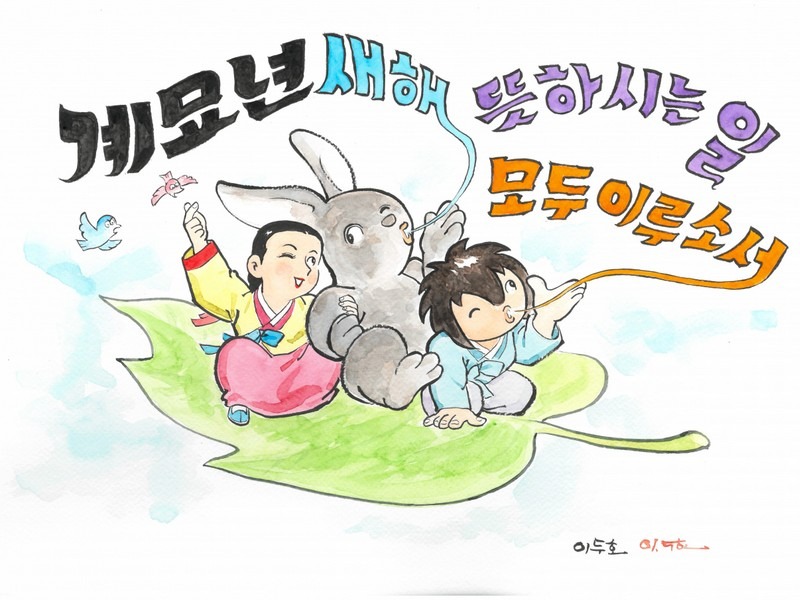
Visit the Korea Manhwa Museum
If you like cartoons, check out the exhibition ‘Eol-To-Dang-To’, meaning “Way to go rabbit! What a confident rabbit!” You can see rabbit-related works by members of the Korea Cartoonist Association and Japanese artists like Korean traditional comic artists Lee Doo Ho and Japanese Manga artists Iwami Seiji. In the lobby, there are also some experiences to partake in like making rabbit masks, tteok making, and writing wishes for the new year. The exhibition runs until February 26, 2023.
- Address: 1 Gilju-ro, Bucheon-si, Gyeonggi-do (경기 부천시 길주로 1)
- Directions: Head to Samsan Gymnasium Station. Out of exit 5, you should be able to spot the museum.
- Hours: Tuesday – Sunday: 10:00am ~ 6:00pm
- Admission: W5,000
Happy Year of the Rabbit to you and you and you! I hope we all have a good one.
Did you like this post? Pin IT!
